Together, We Succeed.
Camino May 2018
Written by: Kaitlyn Thomas
In May, I traveled with the Honors Program to Spain. The main purpose of the trip was the Camino. The Camino is a pilgrimage that has several variations that all culminate in a walk (biking or sailing is also considered acceptable) to Santiago de Compostela. Santiago is believed to be the place where St. James the Apostle is buried. When the Muslims ruled Spain this pilgrimage became of great importance to the Christians still living in Spain. Our particular journey was the “Camino Ingles,” which takes place in the region of Galicia, in northwestern Spain. The walk on the Camino Ingles is approximately 75 miles. Yes, 75 miles.
When I first told my family about this trip, they laughed. Quite honestly, I laughed a little about even signing up. I knew, however, that I would have recently graduated and doing something that would take a lot of grit and give me the opportunity to travel might be beneficial before I began my new journey in medical school. Besides, the trip not only promised an interesting walk through Galicia, but a stop in Madrid and the gorgeous city of San Sebastian.
Our first day in Spain was at the capital, Madrid. Dr. Christopher McMahon started us off with a whirlwind tour of the city which included Puerta del Sol, Plaza Mayor, the Royal Palace, the Cathedral, the Prado (a famous art museum), and the Retiro (a huge park).
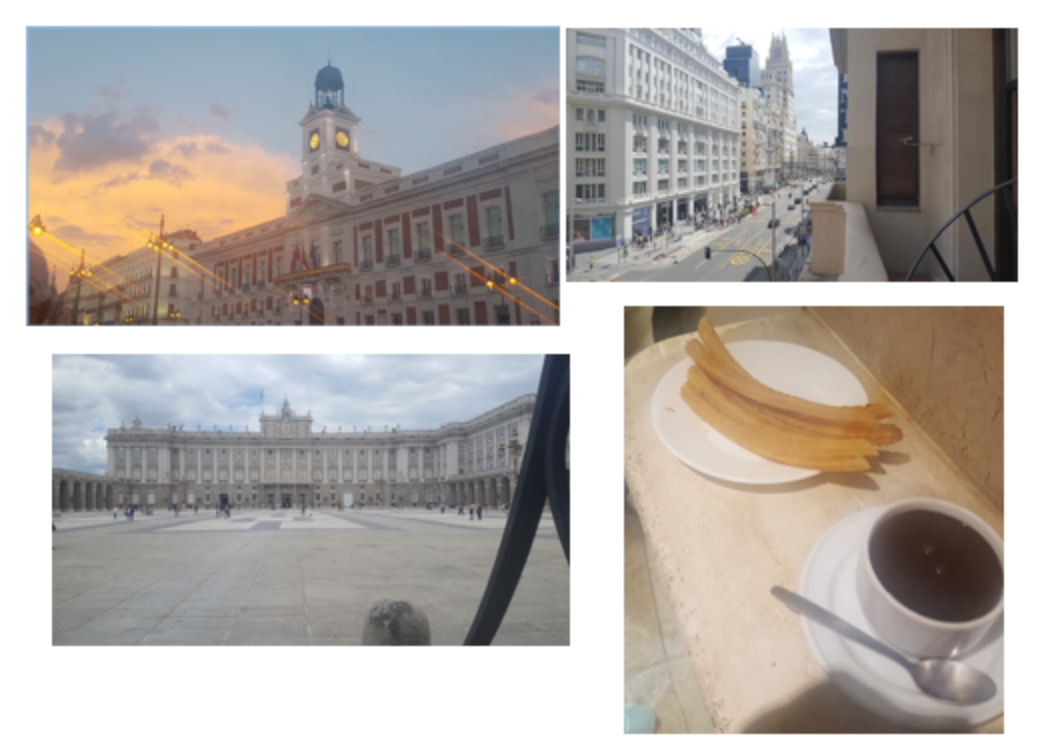
After the tour, a few of us went our separate ways. Another student and I visited the Royal Palace in a tour. It was our first major challenge of using Spanish without Dr. McMahon, who knew far more than we did. After the palace it was Mass and then our first experience of tapas. I was quite surprised at how simple it is to feel satisfied even with small portions of a few different foods. We also couldn’t pass up the opportunity to go to a chocolateria, a place for churros and warm chocolate in a cup.
I also found time in Madrid to visit the Reina Sofia Art Museum where I got to see my first Picasso in person. A highlight of my experience. It’s amazing to see pieces of art that I’ve talked about in school or read about. I also headed into the Prado, another art museum, to see the Black paintings by Goya and a variety of other art.
The following day was a visit to Toledo — a medieval city that is just a quick train ride out of Madrid. The city has cultural influences from the Christians, Muslims and Jews who have had power or influence at one point or another in Spain’s history.
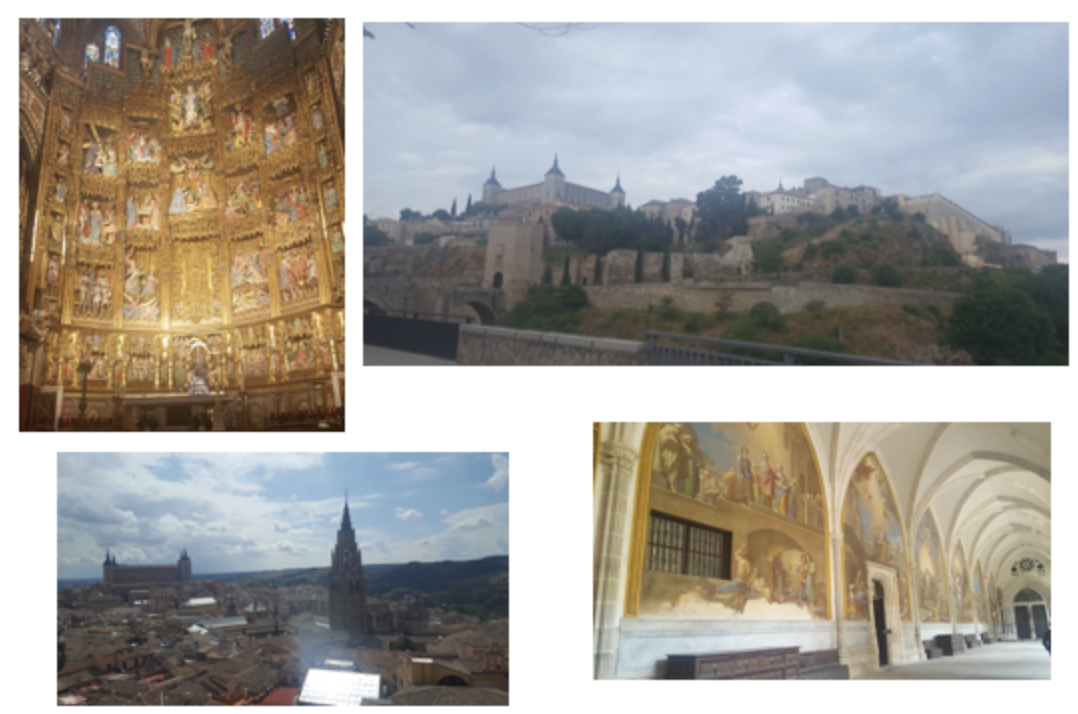
In the city, we visited a few sites which included the Cathedral, the Roman Bridge and a Jesuit church with a scenic overlook highlighting the entire city. Our adventure in Toledo also granted us our first experience with comida, the main meal of the day in Spain. I had my first opportunity to try gazpacho, a Spanish vegetable soup, and flan, a Spanish dessert.
After our day in Toledo, the real challenge of the trip began. We flew to Ferrol, Spain, and had one day of rest before we began the Camino. Ferrol gave me my first opportunity to try real squid that was not calamari (it was excellent!). It also opened a window to some of the issues I’ve seen on the news about Europeans facing high unemployment rates and struggling economies. Politically charged graffiti was obvious in many places and even on some posters in stores.
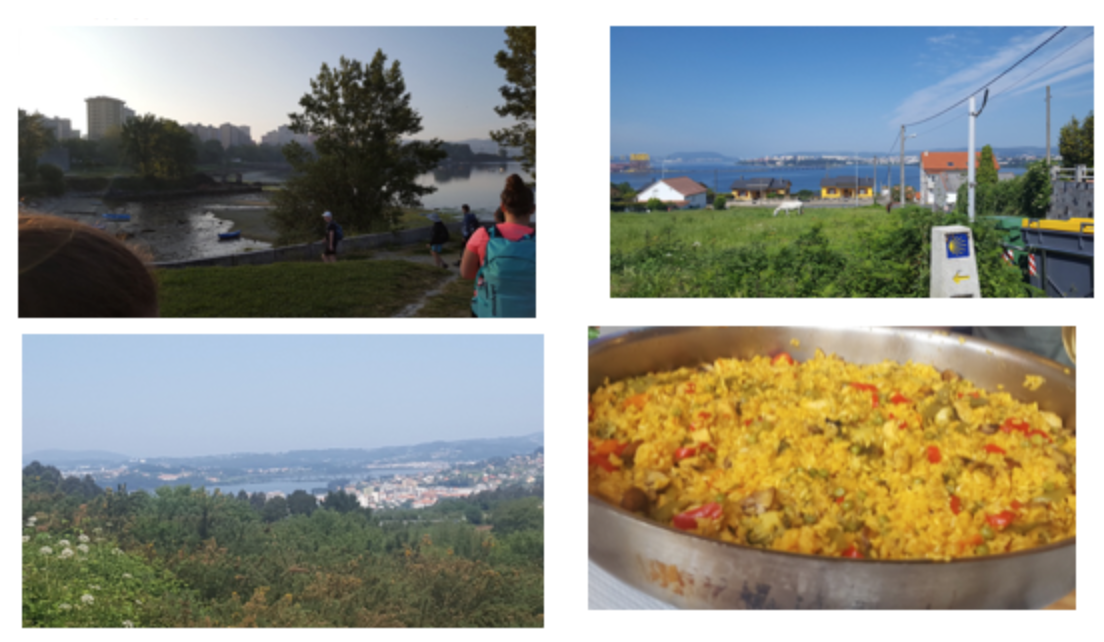
Once the Camino started, the tone of the trip changed. Personally, I felt incredibly nervous. I had spent as many evenings as possible walking for at least 90 minutes and I spent my weekends walking three or four hours when I could. But, as soon as the day came to begin our 6+ hours of walking, I was nervous I hadn’t prepared enough.
Each of us had different motivations for doing the trip. Some were spiritual, some were athletic and some were about personal growth. For me, I felt that the Camino was a time to reflect on spirituality, having grown up Catholic. And I felt that it was an opportunity to take me out of my comfort zone, in as many ways as possible. Immediately, I had that opportunity. On Day 1, it was clear that there were two different groups. One was faster, one was slower, and everyone got a chaperone. I felt a little conflicted at first. I can generally walk pretty quickly and enjoy doing so. But, I realized that the Camino was a perfect opportunity to “stop and smell the roses,” so to speak. This could be one of my only opportunities to step back and make sure that I wasn’t just trying to get the walk over with. I wanted to get something out of the Camino besides “I walked 75 miles.”
I have no regrets about that decision. Walking out of my comfort zone was amazing. After the stress of Day 1, where we were struggling to all stay together as one group, it felt amazing to be free of that tension. In fact, I would almost say that Day 2 was relatively easy. I was grateful for that, because Day 3 was not nearly so simple. Lots of long, steep hills made for an extraordinarily long day. We spent nearly 10 hours walking that day. I wouldn’t say that the hills were particularly difficult for our group because we made good use of breaks and stayed hydrated. Doing anything for 10 hours, however, is just exhausting. Fortunately, there was a café in the hotel we stayed in, so we did not have to go far for a snack after walking. Each day we would usually arrive too late to the hotel for the big meal of the day, comida. So, we would need to wait until the evenings for cena, or dinner. Snacks were a must. I would usually snack a little or have a sandwich on the trail, but after only a small meal for breakfast and a small lunch, I usually felt like I needed a snack once we were done. I will say it was weird, however, because after walking for so long, none of us would feel particularly hungry. It was as if we knew we needed to eat, but we never quite got ravenously hungry like I would expect.
Day 4 was another long day for my group, so by the end I felt exhausted. It was also the first day that I got blisters on my feet (I consider myself pretty lucky because most of the other group got them much earlier). Overall, it felt like the day that would never end. We knew the town that we were supposed to get to: Sigueiro. And we knew that our hotel was another kilometer or so after the town. We were walking for at least three or four hours when we reached a road parallel to a highway that kept offering signs for Sigueiro. The long day made us forget that the highway wasn’t necessarily right in town and once we reached the highway exit (which took nearly an hour), we quickly realized we weren’t yet in town. Instead, we were still 45 minutes away due to a long industrial park with large hills that we were simply very tired for. Once we did reach the town, I wanted to cry tears of joy because it felt so good to be nearly finished (our hotel was about another mile after the town). But, we did feel re-invigorated after a snack and knowing that we only had a little longer to go.
The final day was only approximately eight miles. We walked as a group so that we could enter Santiago de Compostela together. Our arrival was one of the happiest moments I had experienced in a long time (remember I had graduated a week and a half prior, but this felt like just as big of an accomplishment). Of course, quickly I realized there was still walking to do. Exploring the town involved walking. And we had to walk both to the hotel and to the basilica for the Mass.
Throughout the plaza of the cathedral there were protesters who were passing out information packets in several different languages. Their packet explained that they would be talking in the Mass about a mine project along the route of the Camino. Then, in Mass one of the protestors, a woman, made a speech about the mine project, and then the priest gave a homily about the project. Both of these things would be unheard-of in the United States. That was truly fascinating, to see a woman having the opportunity to speak to the congregation about an issue and to see a Church official concur and talk about why their cause fit in with messages from both the Church and Pope Francis. Other highlights from Mass include a ceremony where they swung the Botafuiero in the church. This is a thurible where incense is lit with a variety of symbols. (http://catedraldesantiago.es/en/liturgy/)
After Mass, we got to hug a statue of St. James. This is a tradition of people who travel the Camino, known as pilgrims. We also went down to a crypt where the bones of St. James are believed to be. Our hotel was a converted monastery, which was also beautiful. After a quick break and lunch, consisting of amazing sweet and savory crepes, we went to explore the town. We went through the cathedral again to look at some of the chapels we hadn’t seen yet, and we went exploring through some of the shopping and cafés in town.
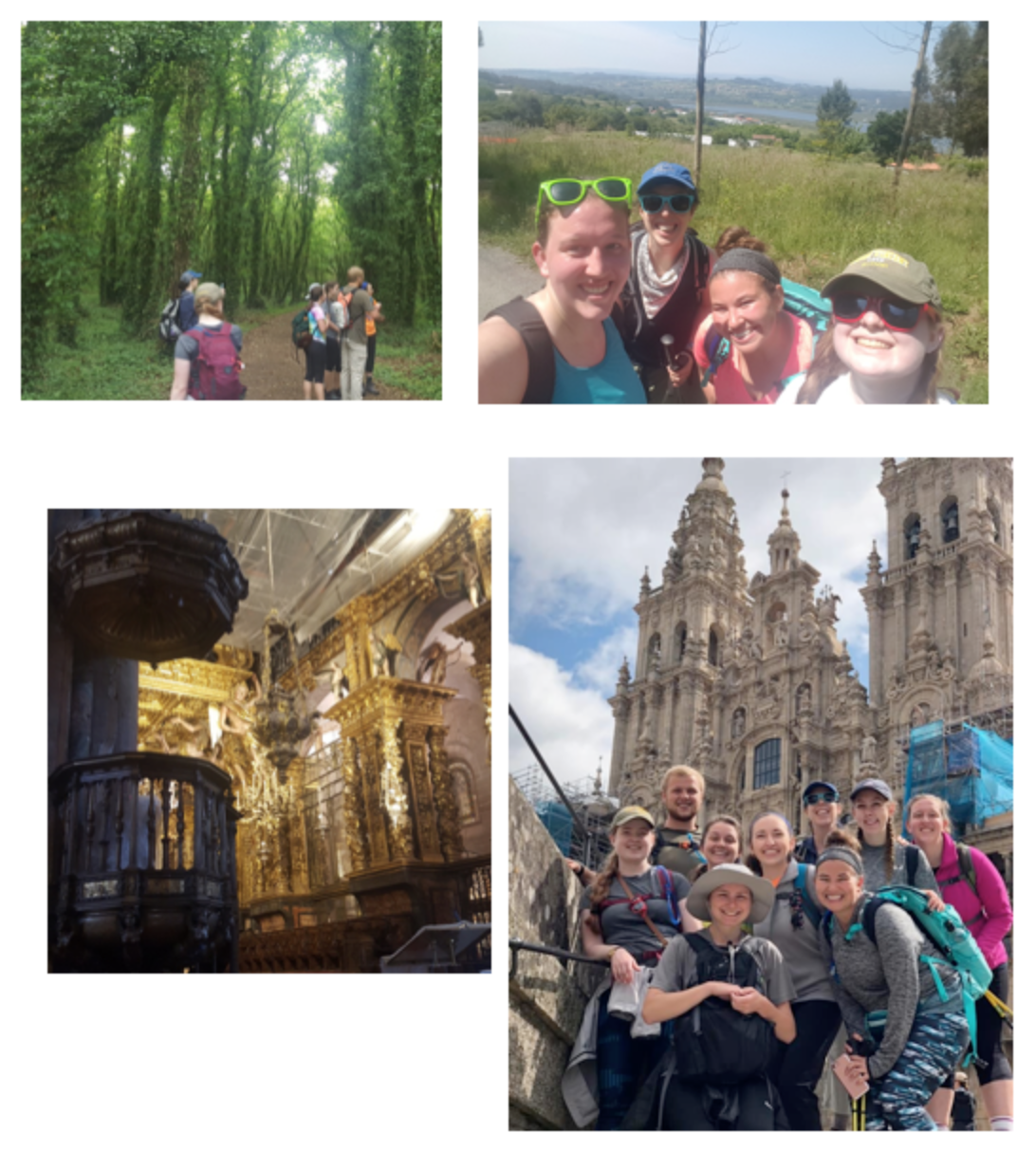
I have a few favorite stories from the Camino. On Day 1, an older man came up to us with his dog. He was on his way to the post office and wanted to share with us all his favorite things about the town. He was also practicing some English with us, but ultimately gave us as students the opportunity to practice listening to Spanish. Even after a few days in the country, I found it was still hard to practice the language, as I hadn’t used it regularly since I was a college sophomore (and even then it was in my two Spanish classes I took as part of the core; Thank you Dr. and Señora Rivas!). On Day 3, we stopped at a café. Three older men were sitting at a table watching the news, and they noticed when we walked in that we were speaking English among ourselves. So they asked where we were from and we had a lovely conversation about the American voting system, because they didn’t understand it. Once they realized none of us were well-versed in Spanish language skills for politics, they immediately changed to talking to us about the pictures hung up in the café about their town. I think the locals talking to us about their town and demonstrating just how much pride they had was probably one of my favorite parts about the whole trip. Additionally, each day around noon (or whenever the café was) we would typically get a bottle of Coca-Cola. I have to be honest. Very few things have tasted so good in my entire life. After being in the hot sun for at least a few hours, a Coke tasted incredibly refreshing (I promise I have not been endorsed by any companies to say that). While in the U.S., I hardly ever drank soda, but under the circumstances, it seemed like a wise idea. We also experienced what we came to call “Camino Brain.” After walking all day, we would find that we couldn’t quite carry on a conversation fully; we would get lost or forget our words. Sometimes we would just pause briefly and stare into what felt like space. I can’t say it felt like a headache, but certainly some kind of fog felt like it had settled over all my thoughts and feelings. Finally, my group talked a lot about showing love and care to one another as we set out to accomplish one of the hardest things most of us had ever done. I’d considered school to be difficult at times and had personal difficulties, but this was a different kind of challenge. It was amazing to know that no matter what happened, these people were going to support me on our Camino journey. If one of us needed a break, we obliged. If we needed encouragement, we obliged. It was an enlightening environment where we could express any thought that we had or anything we were concerned about. I think the most incredible part of that was that we were creating that environment with people who had been strangers just a few days earlier.
The day after we finished the Camino, we headed to the Basque region of Spain to a European vacation destination, San Sebastian. Ernest Hemingway wrote about this town in one of his novels. It’s also famous for a restaurant that is frequently rated one of the best in the world (no, I did not cough up the $250 to go there). On the first day there, we walked to a set of sculptures near the beach by Jorge Oteiza. In fact, we continued to walk a good bit on our first day there. I was surprised because most of us were sore and tired. I personally still had a few nasty blisters that made walking incredibly painful. I ran out of blister bandages and when I bought new ones, the pharmacist and another employee tried to discuss in detail with me how to use them, after they saw me limping around the store (another wonderful example of how kind the Spanish people were).
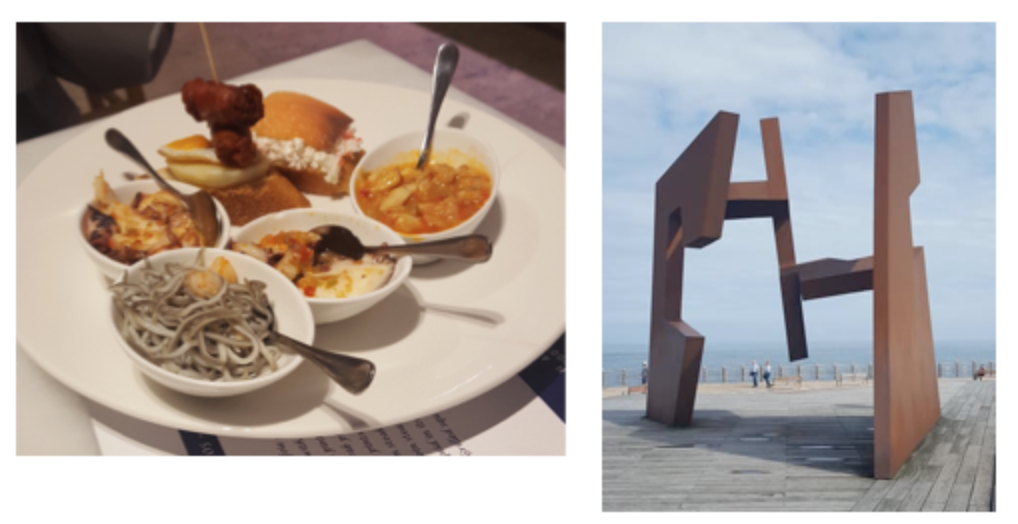
We went to a museum about the history of the Basque region, which felt more like a combination history and art museum. The language barrier there was actually more difficult than you might imagine. We ran into a security guard who was not speaking Spanish to us. Instead, she was speaking the Basque language, which is unrelated to any Indo-European language. Most people also speak Spanish or even English, but it certainly was a more difficult, albeit interesting, experience when they started or even continued to speak to us in Basque.
We spent our second morning hiking (yes, you did read that correctly) up to a statue of Jesus, called the Sacred Heart of Jesus. There were a couple of compelling points about this hike. It was going to take us up to the top of a very large hill in the area, which allowed us to see the entire city from the top. Second, the statue of Christ was quite incredible. Not only was it a large statue, but it was also part of a military fort. Something seemed a little weird about connecting Christian symbols and a military fort so closely. Additionally, while the Camino was really challenging, trying to muster inner strength to accomplish another hike (albeit significantly shorter) was almost more difficult than the Camino itself.
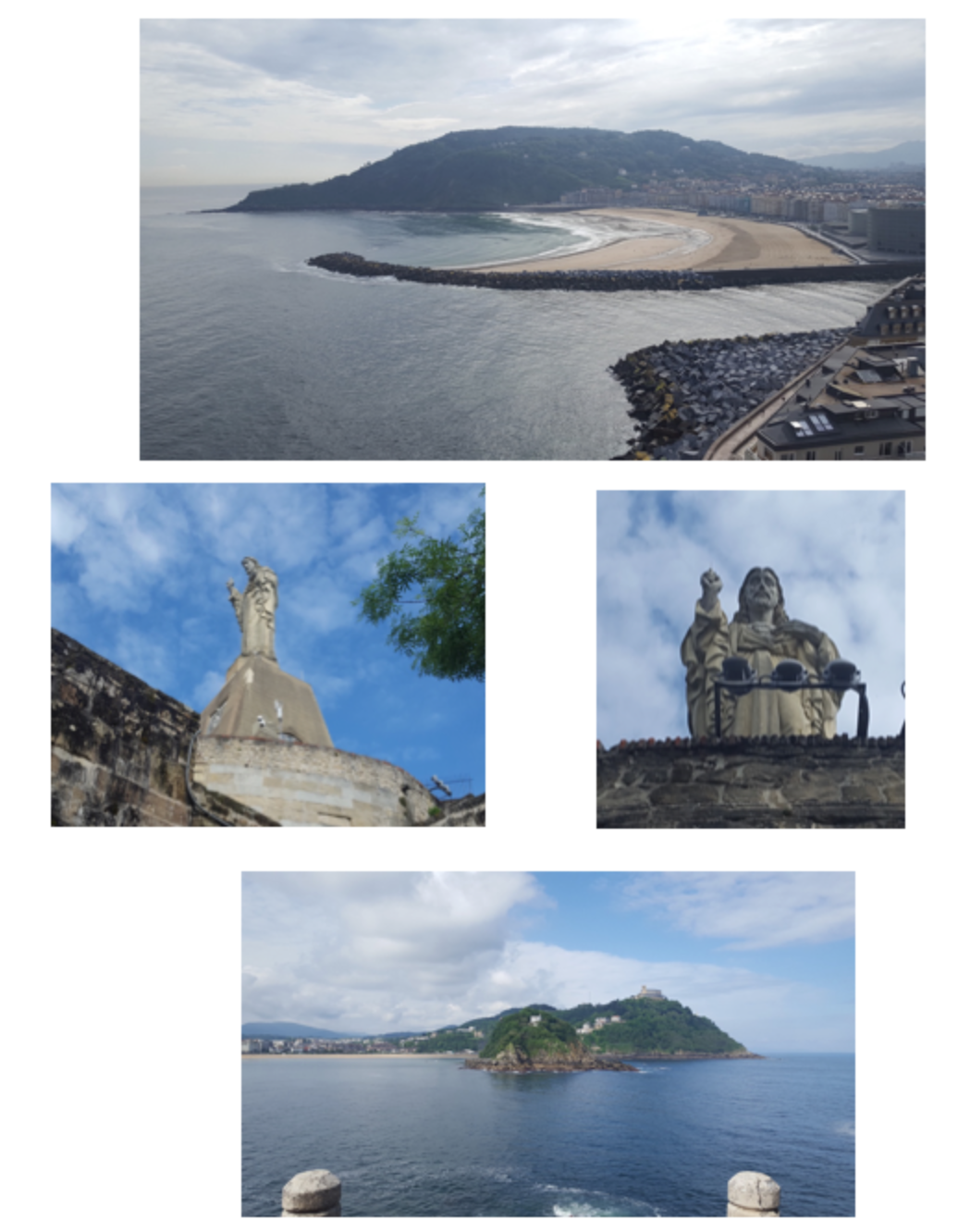
We did an evening of tapas together as a group for our last night in Spain. It was where I had my last opportunity to try new food, which I managed with both baby eel fish and also oysters. We ate a few of our favorites and got ice cream at a place we had come to enjoy in two days of eating our way through San Sebastian.
The following morning it was time to make our long way home. By our calculations we traveled for nearly 24 hours just to get to Pittsburgh International. Each of us had various travels after that. Post-Spain I found that it took about two weeks to fully heal the blisters on my feet (although I could comfortably walk after about a day). Although the blisters and walking may seem miserable, I can’t express just how important this trip was to me. I’ve found that even with a daunting four years of medical school ahead of me, I am less scared than I was, because I know that I can buckle down and tackle challenges just like the Camino. I have found out how important it is to me to be around people who show love and care to others. And I found out how important it is to me to feel like I can talk about anything and learn about my varied interests. My greatest disappointment is that I did not meet my new friends until now, especially since I recently graduated from Saint Vincent. I’m eternally grateful that Saint Vincent offered this trip, and I could put everything I had learned from both Saint Vincent and the Honors Program into the conversations that I had and the experiences I was willing to try in Spain.

